
Windows 10 has changed a lot since it was released six years ago. Successive updates have steadily improved Windows. Bugs have been fixed, visuals revamped, and new features have appeared along the way. Since then, however, Microsoft’s “Master Plan” for Windows 10 has deteriorated considerably. Piece by piece, elements of this plan like the Universal Windows Platform, Windows 10 Mobile, and Cortana have either been totally discontinued or repurposed. Though Windows 11– in contrast to past upgrades– isn’t a huge upgrade from Windows 10, it serves as the launchpad for a revised vision for what Microsoft wants Windows to be: a more coherent software experience to complement the latest PC hardware
System Eligibility
In stark contrast to the aggressive upgrade campaign set forth by Microsoft six years ago with Windows 10, Windows 11 is only being allowed on devices that meet specific standards. For the first time in twelve years, Microsoft has significantly increased Windows’ minimum system requirements. Windows 11 is the first version of Windows that requires Secure Boot, TPM 2.0 support, 4GB of RAM, 64GB of storage, and one from a select list of modern dual-core 64-bit processors.
While you very well could have gotten away with upgrading your dusty decade-old laptop to the latest version of Windows 10, many computers being sold in stores today will be incompatible with Windows 11. Unless you bought your PC very recently, there’s a good chance Microsoft won’t let you have the update at all.
Disappointing as this may be to some people, it’s not the end of the world. Microsoft has had a reputation for supporting legacy versions of Windows for a very long time. Windows 7 was supported and continued receiving security updates for ten years after its launch. Microsoft has committed to doing the same for Windows 10. Even if your PC is stuck on Windows 10, it’ll continue working as it has been for the foreseeable future.
It is possible to install Windows 11 on unsupported hardware using the Windows 11 Media Creation Tool. Doing so, however, will leave your PC in an unsupported and vulnerable state, according to Microsoft.
Start Menu & Taskbar
As soon as you upgrade, the most apparent changes are the new Start Menu and Taskbar which are now centered on the screen by default. This visual change is complemented by the new default wallpaper, which is also centered. Windows 11 is filled with eye candy like this, including subtle shading, transparency effects, rounded corners, transitions, and icon animations. All these little things make Windows 11 feel a lot nicer to interact with than previous versions of Windows. For instance, the (also newly redesigned) Windows logo on the Start Button animates when you click on it.
As for the Start Menu itself, Microsoft hopes its new design will feel more familiar to the average user. The pinned apps appear as icons arranged in a simple grid, rather than re-sizable tiles. You can click the “All Apps” button to view a list of all the apps installed on your PC. You can then pin apps to the Start Menu by right-clicking them and selecting “Pin to Start. Recently installed apps and recent files are displayed just beneath the pinned apps in the “Recommended” section.
Widgets
The Widgets pane is a feature Microsoft has shown off a lot in Windows 11 promotional material. Right now, it’s basically an improved version of the News & Interests flyout from Windows 10. You can pin widgets to display things like the news, the local weather forecast, current stock prices, or traffic in your area. Microsoft Start (basically MSN) powers most of the included widgets. Even though there are pre-installed apps on your PC for things like the weather, clicking on the Weather widget will redirect you to the MSN weather webpage rather than the app.
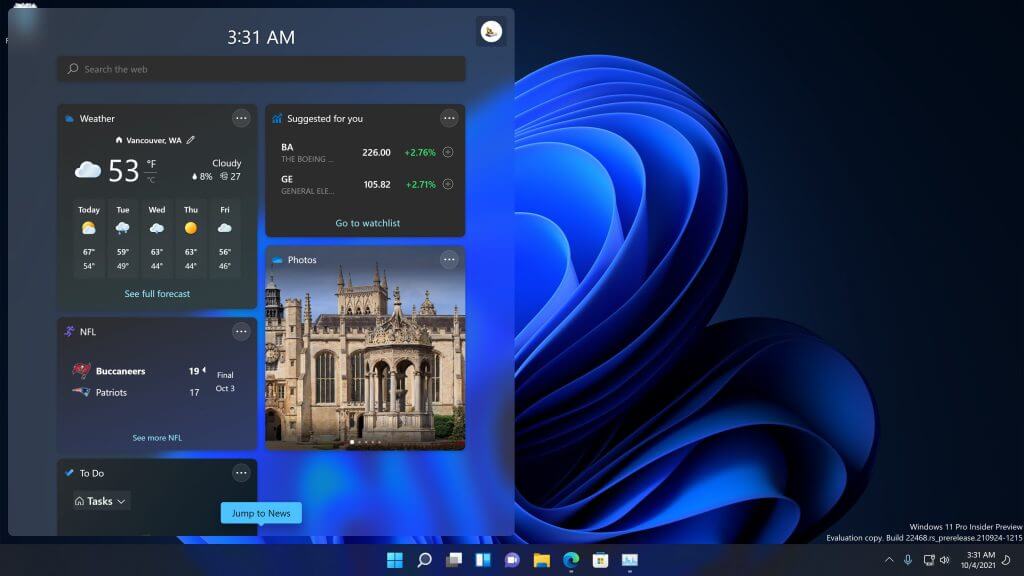
Microsoft Teams
Speaking of promoting Microsoft’s other online services, Windows 11 now includes Microsoft Teams as a pre-installed app. Not only is the Teams app pre-installed, but a new feature called “Teams Chat” is now pinned to the Taskbar by default. The Teams button will open a messenger-Esque flyout which lets you quickly jump into messaging or video sessions with people you know.
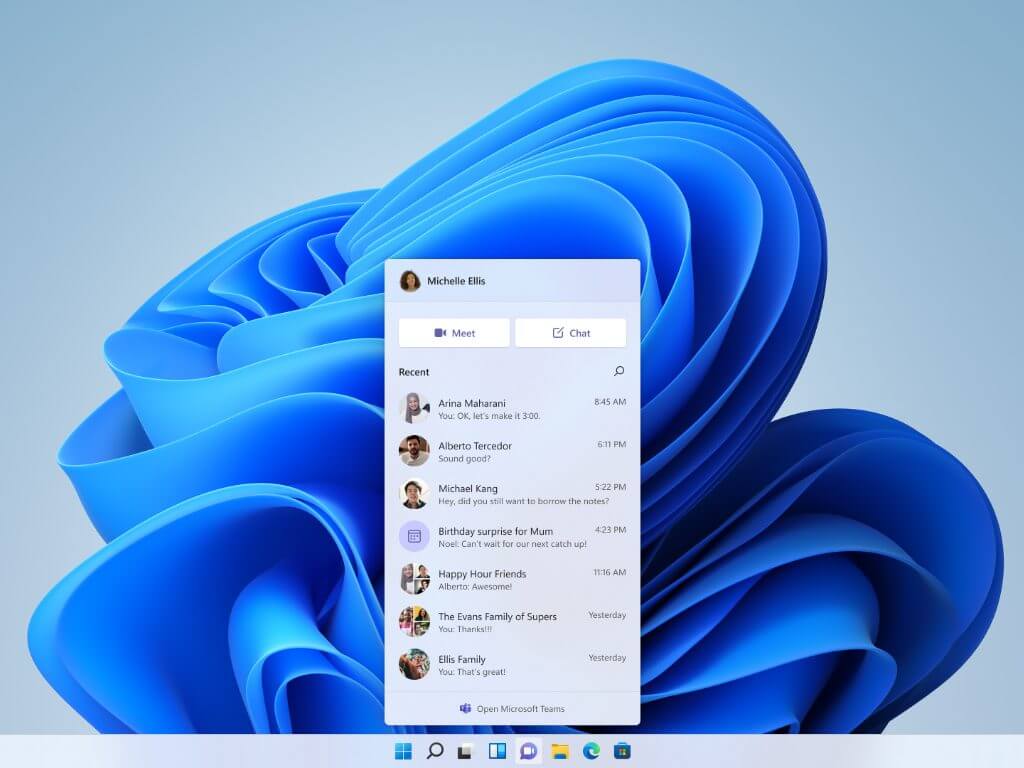
Microsoft is trying to make jumping into Teams Chat as seamless as possible for Windows users. Since you already need a Microsoft Account to log in and use Windows, you can use that same account to jump right into Teams Chat. Once in, you can start messaging someone by entering their Teams name, email, or even their phone number. Microsoft Teams will then message, email, or text them through whatever channel you give it.
Teams chat is surprisingly simple to start using for people who have never used Teams before. Despite its ease of use, it may be difficult for Microsoft to convince people to start using Teams for things not related to their work or school.
A Cleaner Corner
The bottom right corner of the screen has always been one of the most disorganized parts of the Windows UI. Half the random features Microsoft has for Windows have haphazardly been thrown into this corner, piling up over the years. Microsoft has finally made an effort to make sense of this area of the Taskbar. By default, it now has three components: Notification Center, Quick Settings, and Taskbar overflow.
Notification Center is where notifications go and appear in an organized list above the calendar. You can open Notification Center either by clicking on the date & time on the Taskbar or by swiping in from the right-hand side of the screen.
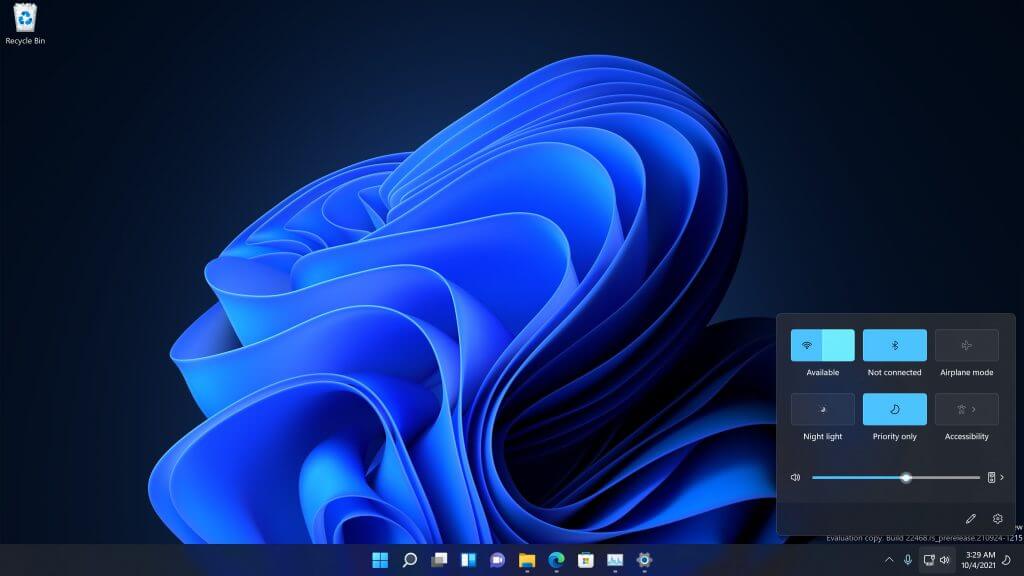
Next, Quick Settings appears just to the left of the date & time. The network, sound, and battery icons serve as status indicators. These icons are part of a single button and do not open distinct menus when clicked. Instead, the Quick Settings menu appears with controls for various settings. The layout of quick settings will depend on the device you’re using and can be rearranged using the edit button near the bottom.
Finally, Taskbar overflow contains applets that let you interact with apps that are running in the background. Background apps include things like Windows Security, OneDrive Sync, or Microsoft Teams.
File Explorer
File Explorer in Windows 11 is in a Frankenstein state at the moment, with bits of modern UI grafted onto various parts of the program. The updated UI elements include new icons, simplified context menus, and a simplified toolbar along the top of the window.
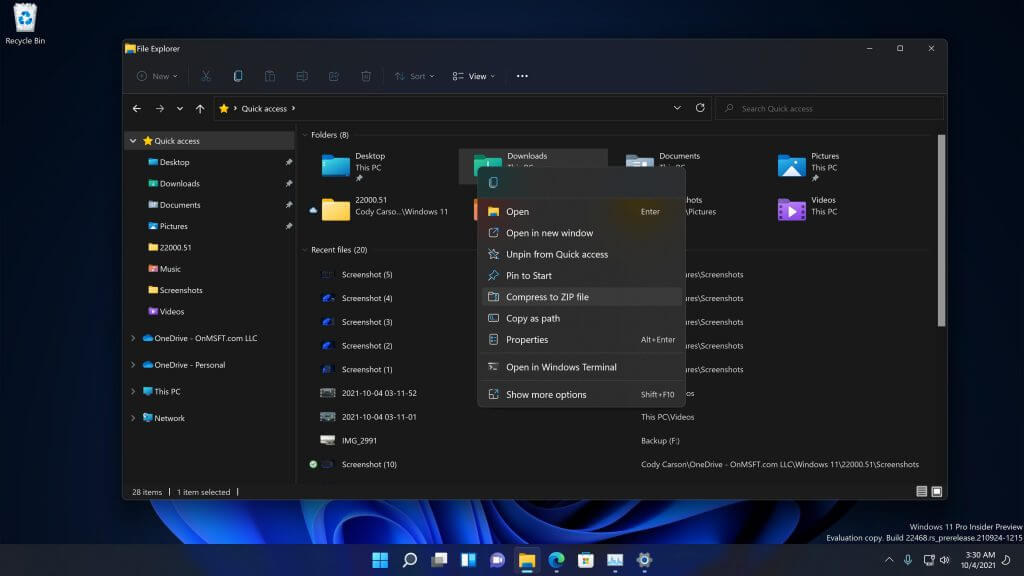
Microsoft has also updated the context menus in Windows Explorer with a cleaner look and more organized layout. Though much nicer looking, these new context menus feel a lot more sluggish than they should be, sometimes taking a couple of seconds to appear.
Organizing clutter often involves discarding unnecessary things, and this is certainly the case with these new menus. In previous versions of Windows, File Explorer context menus could sometimes get dizzyingly long, even extending across the entire vertical length of the screen. Instead of simply tossing out the less-used options, Windows 11 lets users open the old menu by selecting “Show more options” from the new menu.
Extra Steps & Missing Features
Despite the many nice things Windows 11 offers, it’s difficult not to notice the missing features in this update. For instance, the Taskbar is now significantly less customizable than before. The Taskbar will still allow you to pin and unpin your favorite apps, but that’s about it. You can’t move the Taskbar to the top or sides of the screen, you can no longer enable labels, and you can’t restore apps by dragging files over their icons.
It’s not just the Taskbar. Though the new Start Menu is nice, you can’t resize it, make it bigger or smaller, customize the appearance of pinned apps, and so on. The new Quick Actions panel is useful, but it forces you to go into the Windows Settings to change the power mode on your laptop. Previously, the power mode could be changed right from the Taskbar from a flyout menu. This same story holds for many of the new experiences in Windows 11.
Do any of these things limit the capability of the devices which upgrade to Windows 11? No. The ‘missing’ features are usually still there (somewhere), people are just being forced to take two extra steps or do things a little differently. Just like many shoppers despise legislation restricting the distribution of plastic bags in grocery stores, many PC enthusiasts will find themselves equally inconvenienced by these changes.
Multitasking & Navigation
Though snapping windows has been present for well over a decade at this point, most people don’t even know it exists. For those who aren’t aware, in Windows, you can automatically resize apps by dragging them into different corners of the screen. If you drag a maximized app, it becomes a window. If you drag a window into the top edge, it maximizes it. Similarly, dragging a window into the left or right edges of the screen will put it into split-screen mode. None of this is new in Windows 11, but Microsoft wants to help show people they can do this.
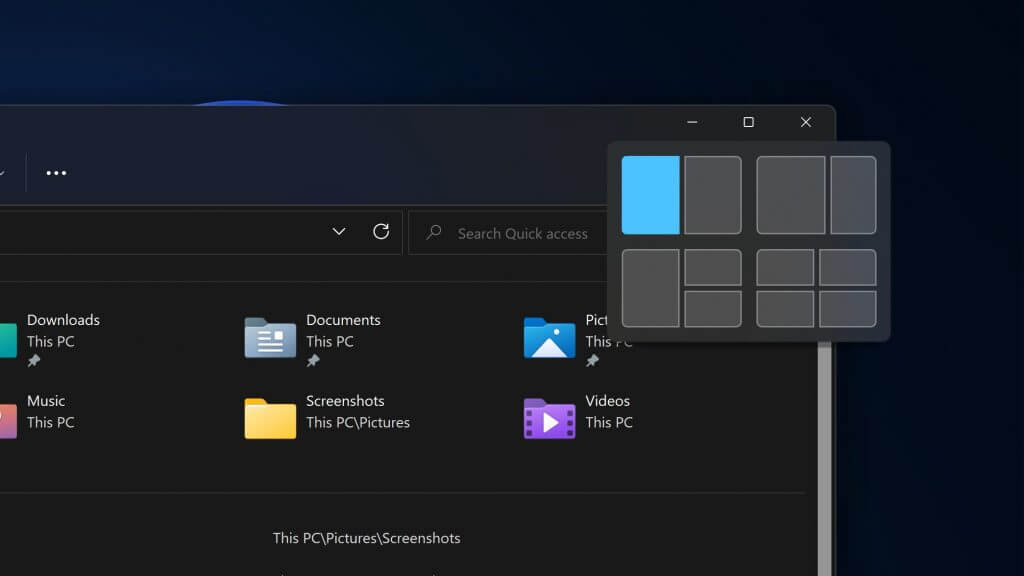
In addition to dragging windows to snap them, you can now hover the mouse cursor over the maximize/restore button to display a set of available snap layouts. The list of available layouts will depend on the size and shape of your screen. Whatever method you use to snap windows around the screen, you’ll also notice the transitions and animations are a lot smoother than they were before.
Touchscreen Experience
Windows 11 is improving the tablet experience by getting rid of tablet mode. Instead, Microsoft focused on making Windows 11’s desktop UI more responsive to touch input than before. Menus and buttons are spaced out enough to give you good touch targets, but not so large as to waste valuable screen real-estate. Touch targets for things like window borders have also been extended when interacting with the UI using touch. You’ll notice that window borders will expand outwards to provide a visual queue for the interaction. Lots of changes like this are present around the Windows 11 UI that make it more touch-friendly.
There are also revised touch gestures in Windows 11. Swiping from the right edge of the screen opens the Notification Center, and swiping from the left edge now opens the Widgets page. The gesture to enter Task View has changed to a three-finger swipe up on the screen. Finally, you can switch between desktops using a four-finger swipe left or right (considering you have already created multiple desktops in Task View).
Perhaps one of the most important touch features– the touch keyboard– has also received a major update in Windows 11. This new keyboard is much more accurate than the old touch keyboard. A lot of this accuracy comes from various intelligent typing techniques Microsoft learned from its work with SwiftKey on Android. On top of its better performance, like a lot of things in Windows 11, the new touch keyboard just looks, feels, and sounds a lot more pleasant than ever before.
New Microsoft Store
The Microsoft Store is another app featuring a completely new design in this update. This new Store will eventually become available on both Windows 10 and Windows 11. This way, even if Windows 11 remains unavailable to most people, developers who publish their apps on the Microsoft Store can target people using either version of Windows. The new Store features a refreshed layout that makes it easier to locate or discover apps and games.
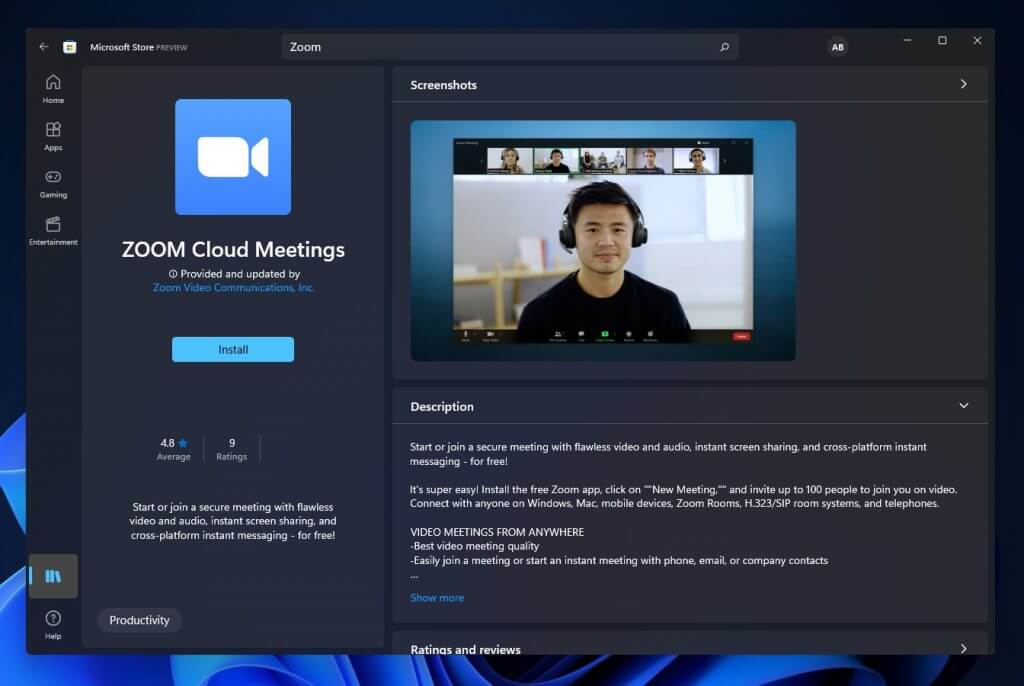
The changes to the new Microsoft Store go beyond just visuals, however. Each new version of Windows since Windows 8 has brought with it a new strategy to incentivize developers to support the Windows platform through the Microsoft Store. Initially, the store was open only to apps that aligned with Microsoft’s then-current Windows vision.
Many of the restrictions which previously discouraged developers from bringing their apps to the Microsoft Store are being lifted. Pretty much all types of apps, including Modern UWP, PWA, Xamarin, Electron, .NET, React Native, Java, and even classic Win32 apps are now welcomed in the Store. Microsoft is even allowing developers to use their own or third-party commerce platforms so they can keep 100% of the revenue earned from purchases. This is already having a positive effect, with popular apps such as Discord and TikTok recently becoming available in the Store. Downloading all your essential apps from the Store will be safer and easier than hunting for installation links in your web browser.
Windows Settings
Unfortunately, not much has been done to transfer the remaining control panel pages into the modern Windows Settings, so it will continue to linger around for some time. On a positive note, the new Windows Settings design is a lot easier to navigate than ever before.
Not only are there lots of nice new icons and visuals in the new Windows Settings, but it’s also displayed in a much more intelligible layout. Most of the Settings are still sorted into the same locations as they were before (thank goodness), however, the primary sections are now persistent on the left side. Large breadcrumb titles along the top of the app build up letting you know exactly where you’ve come from as you navigate deeper into the app.
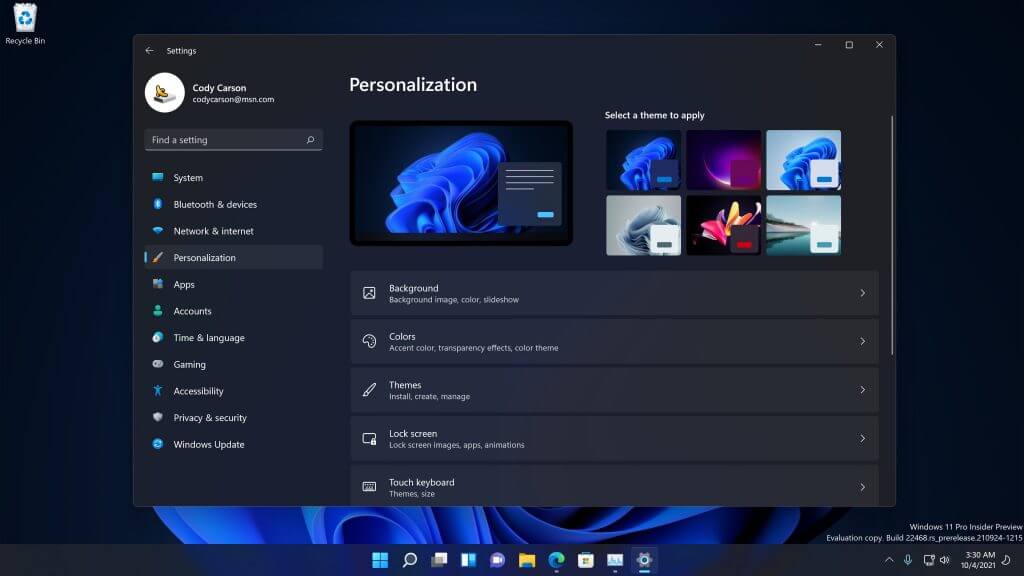
There are many new options in the Windows Settings, though many pertain to the previously discussed new features. Additionally, there will be options for lots of new hardware features such as Wi-Fi 6E, Dynamic Refresh Rate displays, display power saving/dynamic contrast, Auto HDR, DirectStorage, and more.
Should you Upgrade?
Just like a lot of the new Windows settings depend on the presence of certain hardware in your PC, so does your PC’s eligibility for the Windows 11 upgrade. Windows 11’s higher system requirements pretty much guarantee your PC can handle it smoothly. If your PC isn’t compatible, you shouldn’t buy a new one just for the software updates. Microsoft will continue to support Windows 10 until 2025, so unless your PC stops working before then, you should be just fine.
Windows 11’s updated visuals will make your PC feel more pleasant to use in general, so unless you can’t live without some of the specific customization options Windows 11 leaves behind, it’ll be a worthwhile upgrade.